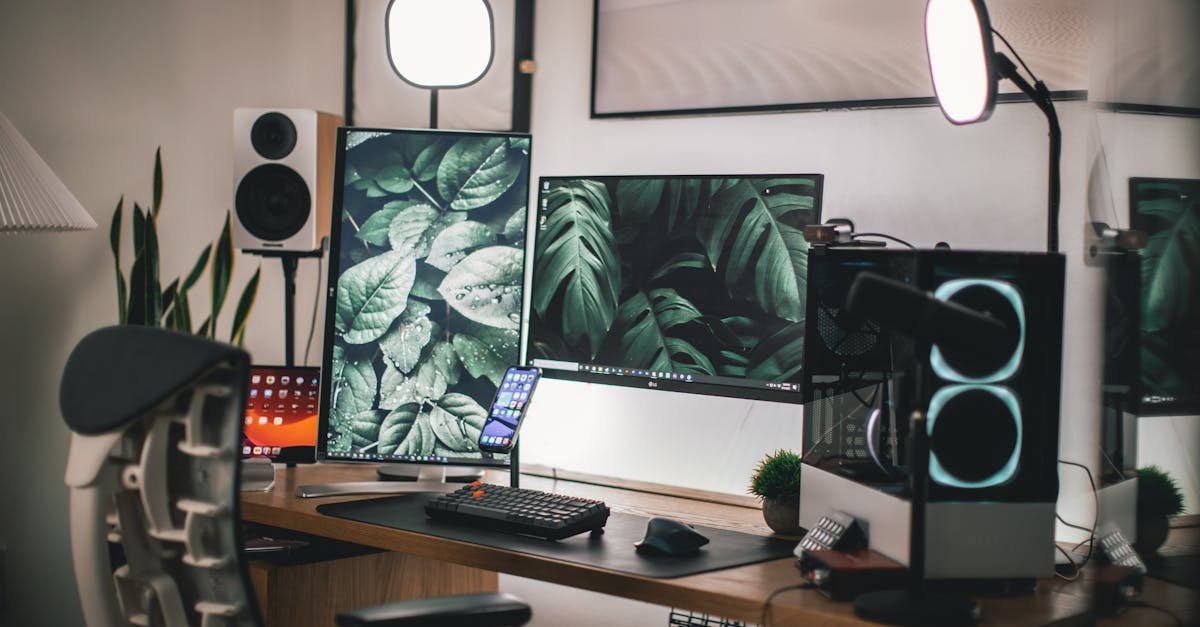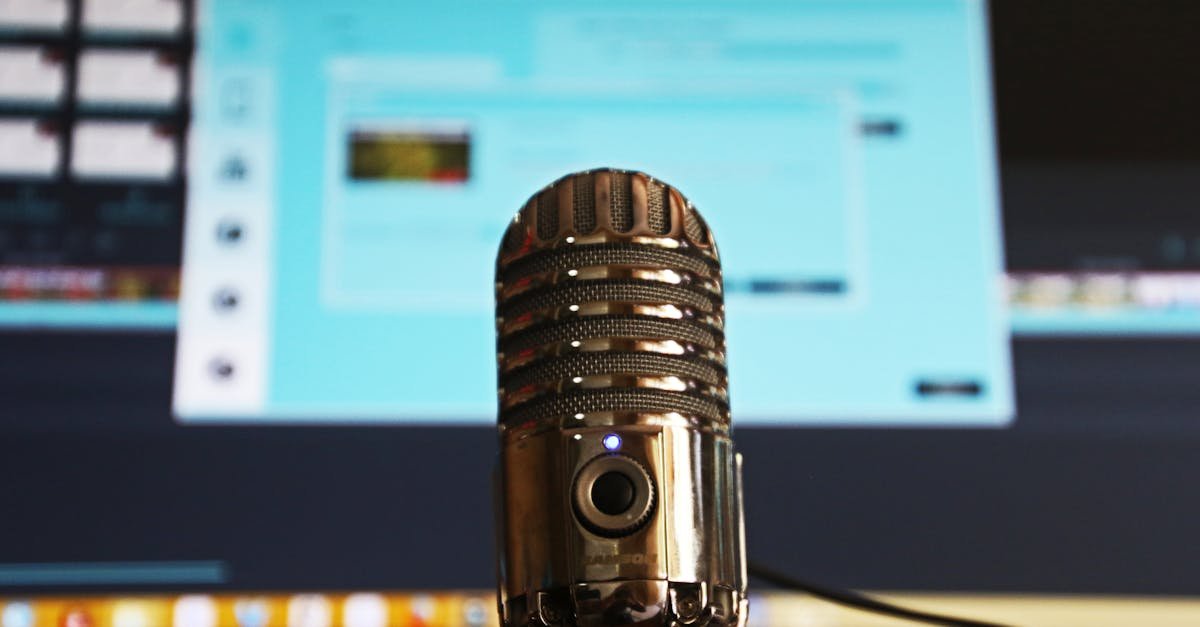Understanding and Tackling Microphone Static: A Beginner’s Guide
Have you ever been in the middle of an important online meeting, recording a podcast, or just chatting with friends, only to be interrupted by that dreaded static noise from your microphone? It’s a common problem, but thankfully, it’s usually fixable. This guide will walk you through the ins and outs of microphone static, why it happens, and, most importantly, how to get rid of it.
First things first: what exactly is microphone static? In simple terms, it’s unwanted background noise that sounds like a hissing, crackling, or buzzing sound. It can range from a barely noticeable whisper to a full-blown audio assault, making it difficult to hear your voice clearly. This can be incredibly frustrating, whether you’re a gamer, a content creator, or someone who just enjoys video calls.
The good news is that static is rarely a sign of a completely broken microphone. More often than not, it’s caused by a combination of factors, including improper settings, faulty connections, environmental interference, and even the quality of your equipment. By understanding these causes, you can systematically troubleshoot the problem and find a solution that works for you.
This tutorial is designed for everyone, from tech novices to seasoned audio enthusiasts. We’ll cover everything from basic troubleshooting steps to more advanced techniques, ensuring that you have the knowledge and tools to banish that annoying static and achieve crystal-clear audio.
So, let’s dive in and explore the world of microphone static!
Why Does Microphone Static Occur?
Before we start fixing things, it’s helpful to understand the root causes of microphone static. Think of it like diagnosing a car problem: you need to know what’s potentially wrong before you can start fixing it. Several factors can contribute to this issue, and often, it’s a combination of them.
One of the most common culprits is **gain**. Gain, in audio terms, is essentially the sensitivity of your microphone. If the gain is set too high, your microphone will pick up not only your voice but also all the background noise in your environment, amplifying it into static. Imagine trying to listen to a quiet conversation in a crowded room; the louder the room gets, the harder it is to hear the conversation.
Another frequent cause is **faulty connections**. Loose or damaged cables, especially those with 3.5mm jacks, can introduce static into your audio signal. Similarly, a damaged USB port or a loose connection between your microphone and your computer can also create noise. Think of it like a broken wire in a lamp: the connection isn’t stable, and the light flickers.
**Environmental interference** is another major player. This includes electromagnetic interference (EMI) from other electronic devices, such as phones, computers, and even power outlets. These devices can emit radio frequencies that interfere with your microphone’s signal, causing static. It’s like having a radio station that’s picking up multiple signals at once, resulting in a distorted sound.
The **quality of your microphone** itself also plays a role. Inexpensive microphones often lack the shielding and noise-canceling capabilities of higher-end models, making them more susceptible to static. It’s like comparing a basic camera to a professional-grade one: the professional camera will capture a clearer, more detailed image.
Finally, **software settings** can also contribute to static. Incorrect audio settings in your operating system or in the software you’re using (e.g., a video conferencing app or a digital audio workstation) can sometimes introduce noise.
By understanding these potential causes, you’re already one step closer to solving your microphone static problem. Now, let’s move on to the practical steps you can take to fix it.
Step-by-Step Guide to Eliminating Microphone Static
Now that we’ve covered the basics, let’s get down to the nitty-gritty: the steps you can take to eliminate microphone static. We’ll start with the simplest solutions and work our way up to more advanced techniques. Remember to try each step one at a time and test your microphone after each adjustment to see if the static has improved.
1. Check and Adjust Gain Settings
As mentioned earlier, gain is often the primary culprit. The goal is to find the sweet spot where your voice is loud and clear without picking up excessive background noise.
**How to do it:**
- Locate the gain control on your microphone, audio interface, or amplifier. It’s usually a knob labeled “gain” or “input.”
- Start by turning the gain down significantly.
- Speak into your microphone and gradually increase the gain until your voice is at a comfortable level.
- Listen carefully for any static. If you hear it, back off the gain slightly until the static disappears.
**Common Mistakes:**
- Setting the gain too high, which amplifies background noise.
- Not adjusting the gain at all, assuming it’s set correctly.
**Additional Tips:**
- If you’re using a software application, check its audio settings for a gain control as well.
- Experiment with different gain levels depending on your recording environment.
**Benefits:**
- Reduced or eliminated static noise.
- Improved audio clarity.
2. Secure Connections and Cables

Faulty connections are another common source of static. Make sure all your cables are securely plugged in and in good condition.
**How to do it:**
- Carefully inspect all cables connecting your microphone, headphones, computer, and any audio interfaces.
- Unplug and replug each cable, ensuring it’s firmly seated in its port.
- If you notice any frayed wires, bent connectors, or other damage, replace the cable.
- Try using a different USB port on your computer.
**Common Mistakes:**
- Overlooking loose connections.
- Using damaged cables.
**Additional Tips:**
- If you suspect a cable is faulty, try swapping it with a known good cable to test.
- Consider using high-quality, shielded cables to minimize interference.
**Benefits:**
- Elimination of static caused by poor connections.
- More reliable audio signal.
3. Minimize Environmental Interference
Electronic devices can create electromagnetic interference (EMI), which can cause static.
**How to do it:**
- Move your microphone and audio cables away from other electronic devices, such as computers, phones, power strips, and electrical wires.
- If possible, plug your audio equipment into a different electrical outlet than your computer.
- Put your phone on airplane mode or turn it off completely while recording.
**Common Mistakes:**
- Ignoring the proximity of other electronic devices.
- Not considering the location of power outlets.
**Additional Tips:**
- Use a power conditioner to filter out electrical noise.
- If you’re recording in a home studio, consider using shielded cables and soundproofing materials.
**Benefits:**
- Reduced static caused by EMI.
- Cleaner audio signal.
4. Optimize Microphone Placement and Technique

How you position your microphone and how you speak into it can also affect audio quality.
**How to do it:**
- Position your microphone at least 10 feet away from speakers, amps, or other devices that could cause feedback.
- Hold the microphone 1–3 inches (2.5–7.6 cm) from your mouth when you talk.
- If you’re using a noise-canceling microphone, make sure it’s positioned close to your mouth.
**Common Mistakes:**
- Holding the microphone too far away from your mouth.
- Placing the microphone too close to other sound sources.
**Additional Tips:**
- Use a pop filter to reduce plosives (harsh “p” and “b” sounds).
- Experiment with different microphone positions to find the optimal sound.
**Benefits:**
- Improved audio clarity.
- Reduced background noise.
5. Utilize Noise Reduction Software and Hardware

If the previous steps don’t completely eliminate the static, you can use software or hardware to further reduce it.
**How to do it:**
- **Noise Gate:** A noise gate cuts off all audio that drops below a certain volume. You can use a standalone noise gate or a noise gate effect in your digital audio workstation (DAW). Adjust the threshold to be just above the background noise level.
- **Noise Reduction Software:** Many DAWs and audio editing programs offer noise reduction tools. These tools analyze the audio and remove unwanted noise, such as static, hiss, and hum.
- **DAW Editing:** Use a DAW to edit your audio and remove static manually.
- **Hard Limiter:** If the static is caused by clipping, use a hard limiter to put a cap on audio volume.
**Common Mistakes:**
- Using noise reduction tools too aggressively, which can distort the audio.
- Not experimenting with different settings to find the optimal balance.
**Additional Tips:**
- Experiment with different noise reduction settings to find the optimal balance.
- If you’re using a DAW, try using multiple noise reduction techniques in combination.
**Benefits:**
- Further reduction of static noise.
- Improved audio quality.
6. Check Your Computer’s Sound Settings
Sometimes, the issue lies within your computer’s sound settings.
**How to do it:**
- Open the sound settings in your computer’s control panel.
- Select the “Recording” tab and right-click on your microphone.
- Click “Properties” and check for a “Microphone Boost” option. Turn it off or lower the volume on the boost.
- Go to the “Levels” tab and make sure the microphone’s level is set appropriately.
- Click the “Enhancements” tab (if available) and turn on “Noise Suppression” and “Echo Cancellation.”
**Common Mistakes:**
- Overlooking the computer’s sound settings.
- Not adjusting the microphone boost or other settings.
**Additional Tips:**
- Experiment with different settings to find the optimal balance.
- Make sure your sound drivers are up to date.
**Benefits:**
- Reduced static caused by software settings.
- Improved audio quality.
Advanced Techniques and Considerations for Microphone Static
If you’ve worked through the basic steps and are still experiencing static, it’s time to delve into some more advanced techniques. These methods often require a deeper understanding of audio equipment and signal flow, but they can be highly effective in resolving persistent static issues.
1. Soundproofing Your Recording Environment
If you’re recording audio indoors, the acoustics of your room can significantly impact the quality of your recordings. Soundproofing can help reduce ambient noise and reflections, which can contribute to static and other unwanted sounds.
**How to do it:**
- **Acoustic Treatment:** Use soundproofing foam, acoustic panels, or other sound-absorbing materials on your walls and ceiling. This will help absorb sound waves and reduce reflections.
- **Insulation:** Insulate your walls and floor with tapestries, carpets, or other materials to reduce the transmission of sound from outside the room.
- **Reduce Ambient Noise:** Turn off any fans, air conditioning units, or other devices that produce noise while you’re recording. Close windows and doors to minimize outside sounds.
**Common Mistakes:**
- Not addressing the acoustics of the room.
- Using ineffective soundproofing materials.
**Additional Tips:**
- Experiment with different soundproofing techniques to find what works best for your space.
- Consider recording in a closet or other small, enclosed space to minimize reflections.
**Benefits:**
- Reduced ambient noise and reflections.
- Improved audio clarity and quality.
2. Upgrading Your Microphone and Audio Interface
If you’re using an inexpensive microphone or a built-in sound card, upgrading your equipment can make a significant difference in audio quality.
**How to do it:**
- **Microphone:** Consider purchasing a higher-quality microphone with better noise-canceling capabilities. XLR microphones are generally preferred for their superior sound quality and shielding.
- **Audio Interface:** An audio interface is a device that converts analog audio signals to digital signals. A good audio interface can provide a cleaner, more powerful signal to your computer, reducing static and improving overall audio quality.
**Common Mistakes:**
- Using low-quality equipment.
- Not researching and choosing the right equipment for your needs.
**Additional Tips:**
- Read reviews and compare different microphones and audio interfaces before making a purchase.
- Consider your budget and your specific recording needs when choosing equipment.
**Benefits:**
- Improved audio quality.
- Reduced static and background noise.
3. Addressing Ground Loops
A ground loop is a common electrical problem that can cause hum and static in audio equipment. It occurs when there are multiple ground paths in your system, creating a loop that allows unwanted current to flow.
**How to do it:**
- **Identify the Ground Loop:** The first step is to identify the source of the ground loop. This can be done by disconnecting devices one at a time and listening for changes in the hum or static.
- **Use a Ground Loop Isolator:** A ground loop isolator is a device that breaks the ground loop, preventing unwanted current from flowing.
- **Ensure Proper Grounding:** Make sure all your audio equipment is properly grounded.
**Common Mistakes:**
- Not identifying the source of the ground loop.
- Using an ineffective ground loop isolator.
**Additional Tips:**
- Consult an electrician if you’re unsure about proper grounding techniques.
- Experiment with different grounding configurations to find what works best for your system.
**Benefits:**
- Elimination of hum and static caused by ground loops.
- Improved audio clarity.
4. Using a USB Hub
Sometimes, the power running through the USB port can cause static. Using a USB hub can help isolate the microphone from the computer’s power supply.
**How to do it:**
- Plug your USB microphone into a powered USB hub.
- Plug the USB hub into your computer.
**Common Mistakes:**
- Using an unpowered USB hub.
- Not ensuring the USB hub is compatible with your microphone.
**Additional Tips:**
- Use a USB hub with its own power supply.
- Try different USB ports on the hub.
**Benefits:**
- Reduced static caused by USB power issues.
- Improved audio quality.
Troubleshooting Common Microphone Static Issues
Even after following all the steps, you might still encounter some specific static-related problems. Here’s how to troubleshoot some of the most common issues:
1. Static in Headphones but Not in Recordings
If you hear static in your headphones but not in your recordings, the problem is likely with your headphone jack or your headphones themselves.
**Troubleshooting Steps:**
- Try a different pair of headphones.
- If the static disappears with a different pair of headphones, the problem is with your original headphones.
- If the static persists, the problem is likely with your headphone jack. Try using a different headphone jack or a USB audio adapter.
2. Static Only When Using a Specific Application

If you only hear static when using a specific application, the problem is likely with the application’s audio settings or its interaction with your microphone.
**Troubleshooting Steps:**
- Check the application’s audio settings and make sure your microphone is selected as the input device.
- Adjust the application’s gain settings.
- Try disabling any noise reduction or echo cancellation features in the application.
- Update the application to the latest version.
3. Static After a Windows Update
Sometimes, Windows updates can cause audio problems, including microphone static.
**Troubleshooting Steps:**
- Roll back your audio drivers to a previous version.
- Check for updated audio drivers from your computer manufacturer’s website.
- Run the Windows audio troubleshooter.
4. Static with a USB Microphone

USB microphones can be susceptible to static caused by power issues or interference.
**Troubleshooting Steps:**
- Try plugging the microphone into a different USB port.
- Use a powered USB hub.
- Make sure your USB drivers are up to date.
5. Static with an XLR Microphone
XLR microphones are generally less susceptible to static than USB microphones, but they can still experience issues.
**Troubleshooting Steps:**
- Check the XLR cable for damage.
- Make sure the XLR cable is securely connected to both the microphone and the audio interface.
- Try a different XLR cable.
- Check the audio interface’s settings and make sure the phantom power is turned on if required by your microphone.
Frequently Asked Questions (FAQ)
Here are some frequently asked questions about microphone static, along with concise answers:
**Q: What causes microphone static?**
A: Microphone static can be caused by a variety of factors, including incorrect gain settings, faulty connections, environmental interference, and the quality of your equipment.
**Q: How do I reduce static in my microphone?**
A: Start by adjusting the gain settings, securing all connections, minimizing environmental interference, and optimizing microphone placement. You can also use noise reduction software or hardware.
**Q: My microphone is picking up static, but I don’t know where it’s coming from. What should I do?**
A: Systematically troubleshoot the problem by checking each potential cause, starting with the simplest solutions and working your way up to more advanced techniques.
**Q: Should I buy a new microphone?**
A: If you’ve tried all the troubleshooting steps and are still experiencing static, upgrading your microphone might be a good option. However, make sure the problem isn’t caused by other factors before investing in new equipment.
**Q: What is a noise gate?**
A: A noise gate is an audio effect that cuts off all audio that drops below a certain volume. It can be used to reduce background noise and static.
**Q: What is an audio interface?**
A: An audio interface is a device that converts analog audio signals to digital signals. It can provide a cleaner, more powerful signal to your computer, reducing static and improving overall audio quality.
**Q: What is a ground loop?**
A: A ground loop is a common electrical problem that can cause hum and static in audio equipment. It occurs when there are multiple ground paths in your system, creating a loop that allows unwanted current to flow.
**Q: How do I fix static in my headphones?**
A: If you hear static in your headphones, try a different pair of headphones or check the headphone jack.
**Q: How do I fix static in a specific application?**
A: Check the application’s audio settings, adjust the gain, and try disabling any noise reduction features.
**Q: Can a Windows update cause microphone static?**
A: Yes, sometimes Windows updates can cause audio problems. Try rolling back your audio drivers or checking for updated drivers from your computer manufacturer.
